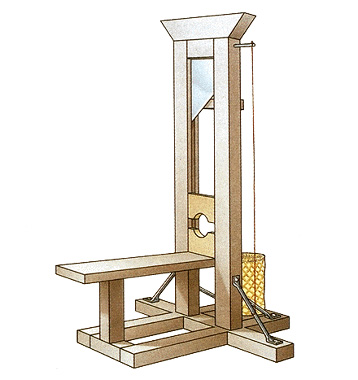Guillotine, << GIHL uh teen or gee yuh teen, >> was a beheading machine. It became the official instrument of execution in France in 1792, during the French Revolution. The device was named for Joseph Ignace Guillotin (1738-1814), a member of the Revolutionary assembly. He regarded the device as a quick and merciful type of execution.

A guillotine had two posts joined by a crossbeam at the top. A heavy steel knife with a slanting edge fit in grooves in the posts. A cord held the knife in place. When the executioner cut the cord, the knife dropped and cut off the victim’s head.
Ancient Persians are said to have had a similar machine. The Italians and the Scots also had beheading machines. It was not until 1981, when France abolished capital punishment, that the use of the guillotine ended.
